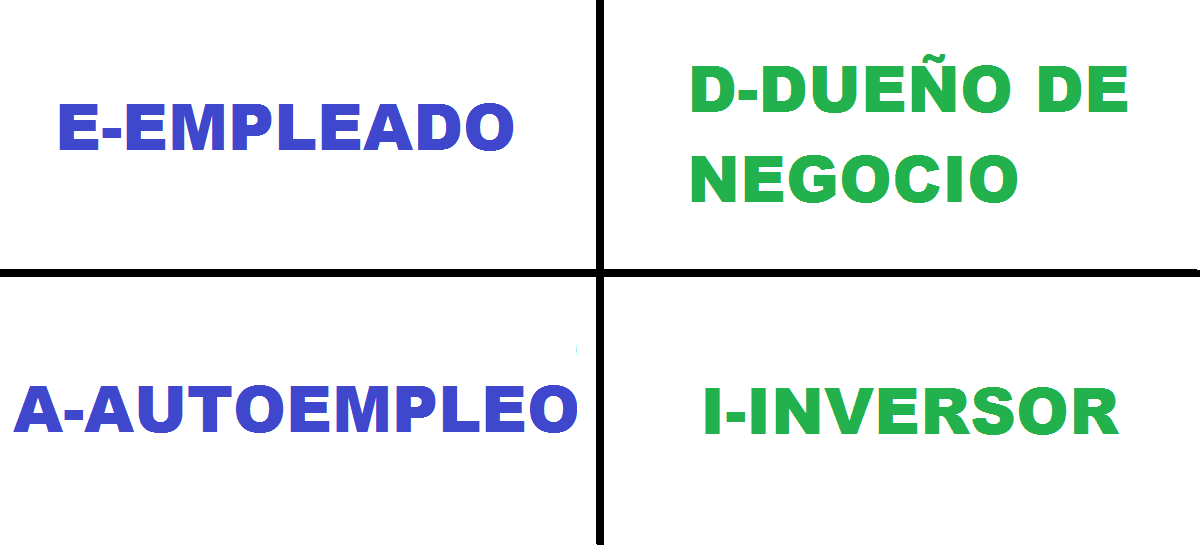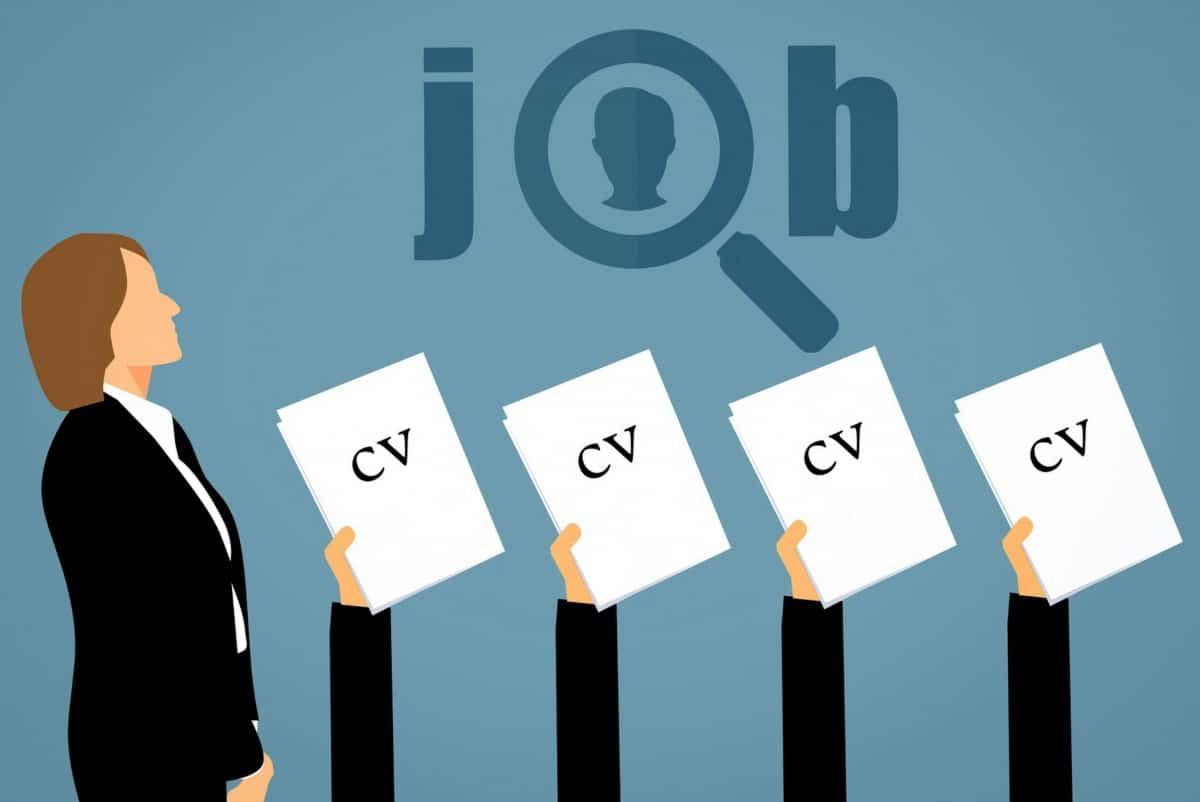
El Cash Flow Quadrant is a book by Robert Kiyosaki.. His figure is well known among many people who are interested in finance and in particular in "financial freedom". The Cash Flow Quadrant is a continuation of his masterpiece "Rich Dad Poor Dad," and the quadrant is meant to be a mental guide for readers to learn the psychological art of achieving financial freedom.
In this article we are going to focus on understanding and explaining what the money flow quadrant is. we will also see what mentalities occupy each of the 4 quadrants, and what tips Kiyosaki offers for moving from one side to the other. In turn, the type of mentality that the types of person found in it have, and what patterns they follow according to the education and the place that the different people occupy. If you want to learn more about how to relate to money, continue reading!
What is the quadrant of the money flow?

Robert Kiyosaki's Cash Flow Quadrant classify people according to their way of earning a living. In it, he emphasizes that to achieve financial freedom we should be on the right side of the quadrant. The main reason is that people who are on the right side receive passive income from their methods. This consequently makes them less dependent on time for income, which is why they have more time in their lives for their interests than people on the left side.
The author also emphasizes that this is produced as a result of economic education that people have received in their childhood. Being in most cases very little or none. This encourages inappropriate behavior if the goal is to become financially free. And in turn, it is the main reason why, in exchange for “security” and greater risk aversion, most of the population is employed, that is, the “E” quadrant.
Even so, the quadrant of the flow of money tries to expose the way of thinking of each type of person, and the most common practices. Next, we are going to see what kind of people each quadrant is made up of.
E-Employee

The employee referred to by Kiyosaki is any person who works under the orders of another person or direction. It can be from a factory worker, to a manager, to the president of a company. The benefits that an employee pursues as an objective are the following:
- Security. Know that yes or yes you will receive your payroll.
- Have a good salary. Something for which he is even going to study or compete for better positions.
- Profits. Any other bonus you can get, from commissions, several extra payments, option to upgrade, etc.
Despite this, Robert Kiyosaki expresses the following Bad points:
- Afraid. Security is the result of the fear of failing if you want to undertake.
- Instability. In the current times, it cannot be taken for granted that some adversity will not come.
- Uncertainty. Job security can come before money, and even knowing that a good offer may come out elsewhere, he doesn't change for fear of it going wrong.
This quadrant represents the majority of people. Most of them starting from families where they have taught us that the best thing is to study for a good education, get good grades, and find a well-paid job. The main problem that arises is that you cannot earn income if you do not work, and the routine is defined by the conditions of the company in which the person is.
A-Self Employed

The second item in the cash flow quadrant refers to the self-employed, also known as the self-employed. Like the employee income may be compromised if the person is absent. Whether for vacation or illness. Hence, it is said that freelancers "never get sick", meaning that no one takes over their work if the person is absent. What characteristics do people have who are under the umbrella of being "their own boss".
- Independence. They do not depend on anyone's work, and they trust themselves enough to get ahead. Nor do they depend on orders from someone above, beyond their customers.
- Hard work. The harder you work, the higher the benefits should be. A reason also why many hours are dedicated.
- perfectionism Try to do your best to have a good reputation.
Within it are people who work as accountants, doctors, lawyers, who have their own store, be it clothing, dry cleaning or a psychological consultation, among many others.
Something that Kiyosaki indicates is that the salary comes from his billing after first paying his expenses. Here the salary is not linear, and a good way to get out of your zone would be to create a system that allows you to hire people to work for this person. In this way, a self-employed person could move to the 3rd point of the money flow quadrant. It should be added, that both the E and S quadrants include 95% of people.
D-Business Owner

They are people who have managed to create a business with a system for other people to work for them. In this quadrant we can start talking about financial freedom. Well, the business owner could be absent without stopping the activity to which his business is dedicated. The main features include the following:
- Why work me? It does not mean being lazy, but learning to delegate tasks to other people, trust them, and even surround himself with people smarter than himself. Anything he can help improve is welcome.
- Leadership. Especially for teamwork. Even look for a president to take care of the company in case it is very large, delegating his functions and having more time.
According to Kiyosaki's rich dad, he explained that there were 3 types of business.
- The traditional, where it has to be disclosed, its progress is slower, but it can give better benefits.
- the franchise, where you can take advantage of the reputation of a brand that people already know.
- multilevel, where the investment here is low, not much training is needed, but the income is lower.
I-Investor

The bottom section of the cash flow quadrant includes the rich. Here the person does not have to work to get income, but they are the result of their investments and they report passive income on a regular basis. The higher the amount invested, the higher the benefits usually. Here they are not the ones who work for money, but it is the money that works for them.
Something important to add is that among all the quadrants, this one also It is the one that carries the greatest risk. Well, not only can the amount of passive income be compromised, the valuation of personal wealth is linked to the economic evolution of the places where it operates. However, if for the A quadrant this is synonymous with fear, here the risk can be seen as something stimulating. Let's review the most important points of this quadrant.
- money works for them. This generates passive income that allows them to maintain or improve their standard of living.
- Select the businesses. This aspect is important, since their main attention is focused on finding out which businesses are the ones that can bring them the most stability or growth. Success is largely determined by how well they are good at this point.
- Compound interest. It is tried to take advantage of it to increase the capital, because if it is intended to amass a greater capital, the compound interest of the reinvestment of the profits helps to make it possible.
Cash Flow Quadrant Conclusions
We have been able to see how the people who belong to the left side tend to be the ones who work the hardest. In turn, those on the right side actually enjoy financial freedom. But something that can also happen is being in 2 quadrants at once. For example, an employee can be an investor at the same time.
Perhaps not all of us have a large amount of capital to invest, but this does not mean that it is mandatory to give up holding shares in a company. You do not need a large capital to be an investor, unless we also want to be able to stop working. Here time is your ally, you can always take advantage of compound interest, and also being able to save something more can allow you to contribute more capital to your investments.
I hope that the Cash Flow Quadrant has helped to motivate you, and see that in the end it is all about a set of decisions that we make. If you liked it, I leave you below a set of reflections that Robert Kiyosaki. As he himself says… “In real life, the smartest people are the ones who make mistakes and learn from them. At school, the smartest people are the ones who don't make mistakes."
